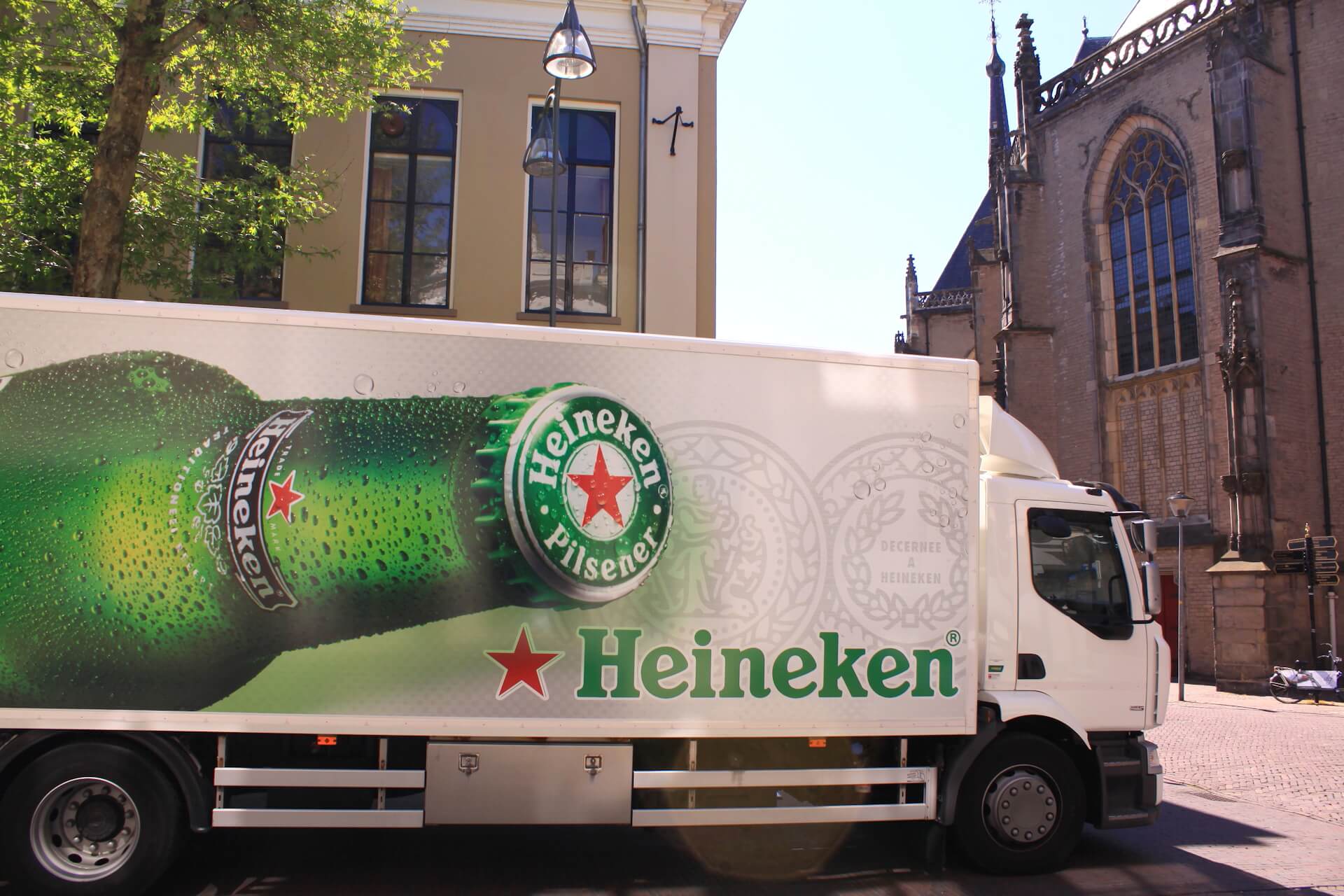The Heineken brewery in Zoutewoude, the Netherlands. Photo: Dreamstime
As Senior Maintenance Engineer at the largest Heineken brewery in Europe, Erik Smit has a deep understanding of the complexities involved in maintaining smooth operations across such an expansive site. Built in Zoeterwoude, the Netherlands, in 1975, the brewery combines decades of history with modern processes. Today, ongoing modernisation efforts are transforming the facility into a future-ready, sustainable operation designed to meet the demands of the coming decades. Stainless Steel World was granted exclusive access for a behind-the-scenes tour of the site.
By Joanne McIntyre, Heat Exchanger World
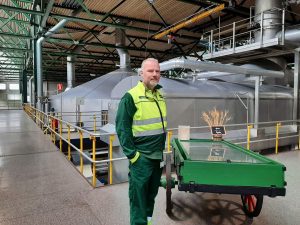
At Heineken’s massive brewing site, operations are organised into two primary departments: Brewing & Utilities, and Packaging. Erik and his team of twelve are dedicated to maintaining the systems within the brewing department, ensuring consistent and reliable operation. Separate from this is the packaging facility. A series of enclosed walkways bridge the two areas, offering panoramic views of the canal’s tree-lined banks and the vibrant green parrots that have taken up residence – fittingly echoing the colour of the iconic Heineken signage displayed on the building.
“This is literally two worlds in one brewery,” Erik explains. “The beer is made on this side, while the packaging take place next door. These processes rely on completely different technologies and, accordingly, have dedicated maintenance crews.”
Since joining Heineken in 2019, Erik has progressed to the role of Senior Maintenance Engineer. Committed to continuous professional development, he recently became certified as an Inspection and Testing Engineer for pressure equipment.
“National safety regulations require that all equipment operating above 0.5 bar be inspected at regular intervals,” Erik explains. “I’m responsible for conducting these inspections on a wide range of systems across the Heineken site. However, equipment classified as high risk must be inspected by an independent third party.”
Maintenance strategy
As Erik guides us through the high-ceilinged brewing hall, he gestures to the fermentation tanks quietly working away. Inside, three renowned beer brands – Heineken, Amstel, and Brand – are in various stages of production. The brewing department’s maintenance team is tasked with both preventive and corrective maintenance to ensure uninterrupted production.
“When an issue occurs,” Erik says, “we conduct a full root-cause analysis to understand what went wrong and why. Only after identifying the source do we implement a resolution. We then update our preventive maintenance schedule to mitigate the risk of recurrence.”
In support of this strategy, Heineken adopted Maximo, a Computerised Maintenance Management System (CMMS), across its global network last year. “Now that all our sites are using the same platform, we can share insights more effectively,” Erik explains. “We’re dealing with the same raw materials and processes, so it makes sense to learn from each other’s experiences.” In recent years, Heineken has introduced the concept of brewing hubs, a strategic initiative designed to promote cross-border collaboration between production sites. Within this framework, regional breweries—such as the two in the Netherlands—now operate more cohesively with their counterparts in England and Ireland. This collaborative model allows teams to exchange technical knowledge and adopt best practices across borders.
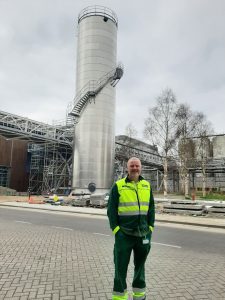
Tank infrastructure
As we walk through the expansive Heineken site, one of the most striking features is the sheer number of tanks – more than 160 spread across the facility.
“When the brewery was originally built in 1975, all tanks were constructed from painted or coated carbon steel,” explains Erik. “Over time, as expected, many of the older tanks have developed corrosion issues.”
To address this, the brewery has implemented a phased upgrade program. “We’re gradually replacing the ageing carbon steel tanks with stainless steel alternatives. Due to the large number of tanks and the associated time and capital investment, it’s not feasible to replace everything at once. However, we’re making steady progress, and all new tanks are constructed from grade 304 stainless steel.”
As part of this modernisation effort, new tanks are being installed indoors where possible to protect them from environmental exposure and further extend their service life. Erik notes that Heineken’s second Dutch brewery, located in Den Bosch, already benefits from a fully stainless steel tank infrastructure.
Multitude of heat exchangers
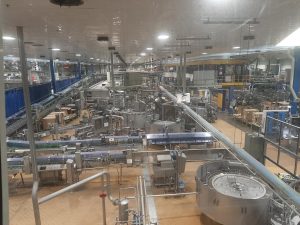
Given the extensive heating and cooling demands throughout the brewery, it’s unsurprising that a wide variety of heat exchangers are in operation, including both plate and shell-and-tube configurations.
“Most of the tube-type heat exchangers are installed within the energy department,” Erik explains. “They’re primarily used for steam condensation and carbon monoxide cooling, playing a key role in heat recovery and process efficiency.”
In contrast, the alcohol-free beer production line exclusively utilises plate heat exchangers, chosen for their compact footprint, high thermal efficiency, and ease of cleaning – particularly beneficial in hygienically sensitive applications.
Some heat exchange solutions are remarkably straightforward. “For example, our fermentation tanks are cooled using external spiral coils. These consist of a half-pipe welded around the circumference of the vessel, allowing ammonia to circulate and remove heat generated during fermentation,” Erik notes.
This combination of heat exchanger types allows the brewery to tailor thermal control solutions to specific process needs, balancing performance, cleanliness, and maintenance considerations.
Heat exchanger maintenance
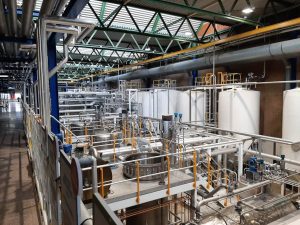
Given the extensive number of heat exchangers in operation—and the varying maintenance requirements of each type—the brewery outsources cleaning and servicing to a specialised external provider.
“We work with a company experienced in steam and condensate systems,” Erik explains. “They bring the necessary technical expertise to perform system diagnostics, conduct thermal calculations, and offer informed recommendations.”
One of the recurring challenges involves the spiral heat exchangers used to heat tanks in the filtration unit. “When steam passes through the spiral, condensate can accumulate. If this condensate suddenly comes into contact with steam, it can ‘flash’—a rapid phase change that causes a violent pressure spike. The result is a loud slamming sound, similar to a small explosion, which places significant thermal and mechanical stress on the heat exchanger components.” To ensure long-term reliability and hygiene compliance, the majority of heat exchangers on site are constructed from stainless steel—chosen for its corrosion resistance and compatibility with both clean-in-place (CIP) systems and thermal cycling.
The Heineken secret
The Zoeterwoude brewery holds a unique and strategic role within the global Heineken network—it is the only site in the world responsible for producing Heineken’s proprietary A-type yeast.
“This yeast is made according to a confidential formulation,” explains Erik. “The entire process takes place in a dedicated high-sanitation area, effectively a stainless steel cleanroom designed to maintain the highest standards of microbiological control.”
To ensure purity and process integrity, the facility uses specially treated ultra-pure water to generate clean steam, which is critical to maintaining sterility throughout the yeast production cycle. Once the yeast is cultivated and quality-checked, it is shipped under tightly controlled conditions to Heineken breweries around the world, serving as the foundational ingredient that ensures product consistency across global operations.
Heat pump project
Sustainability and energy efficiency are priorities for the Heineken team, and a major ongoing initiative is focused on enhancing thermal energy recovery within the brewery. One of the key projects, now nearing completion, involves the installation of a large-scale heat pump system designed to capture and reuse waste heat generated during fermentation.
“Before beer can be bottled or canned, it must undergo pasteurisation,” explains Erik. “This is typically achieved using plate heat exchangers supplied with steam. However, our new system will recover low-grade waste heat from the fermentation process, upgrade it via heat pumps, and use it to heat water for the pasteurisation process.”
By integrating this heat recovery loop, the brewery will significantly reduce steam demand and overall energy consumption.
Water – the most essential ingredient
With water comprising up to 96% of beer, Heineken places the highest priority on its quality and safety. To ensure consistency, the brewery operates its own on-site purification plant.
“We use a reverse osmosis distillation process to remove virtually all impurities from the water,” explains Erik. “After purification, specific minerals are reintroduced to achieve the precise water profile required for brewing.”
The water treatment system is currently undergoing a phased upgrade, with components gradually being replaced with grade 316 stainless steel to enhance hygiene and durability. “Given that water is the foundation of our product, we approach its treatment with the utmost care and precision,” he adds.
Future proof
Heineken’s Zoeterwoude brewery balances tradition with innovation, modernising its infrastructure with stainless steel, energy-efficient systems, and smart engineering. Led by experienced professionals like Erik Smit, the site is steadily evolving into a more sustainable, resilient operation—ready to meet the demands of the future while honouring its legacy.
About this Featured Story
Why Subscribe?
Featured Stories are regularly shared with our Heat Exchanger World community. Join us and share your own Featured Story on Heat Exchanger World online and in print.



